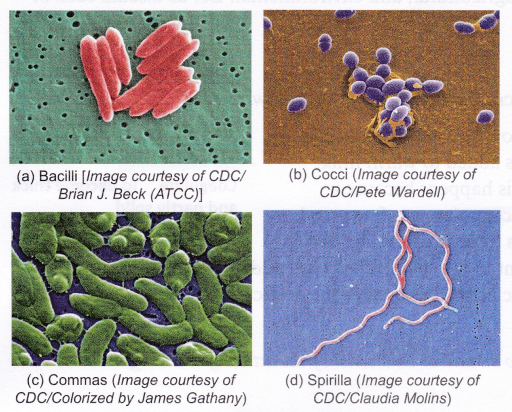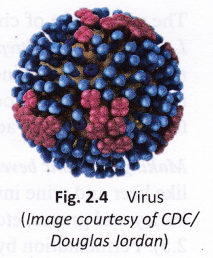Different Types Of Microorganisms
Organisms that are visible only through a microscope are called microorganisms (micro means very small) or microbes.
Microorganisms are the most abundant organisms on our planet. They are found almost everywhere—in ice-cold regions, hot springs and desert, and even inside the bodies of animals and human beings. Some live alone, while others grow in groups called colonies. Microorganisms can be divided into five major groups: bacteria, protozoa, fungi, algae, and viruses.
Bacteria: They are among the smallest and oldest organisms on our planet and are found in four different shapes: rod-shaped (bacilli), spherical (cocci), curved (commas), and spiral (spirilla). Lactobacillus and Streptococcus are examples of bacteria.
 Protozoa: They are a group of animal-like, single-celled organisms. Amoeba, Paramoecium, and Euglena are examples of protozoa.
Protozoa: They are a group of animal-like, single-celled organisms. Amoeba, Paramoecium, and Euglena are examples of protozoa.

Fungi: They are a group of diverse organisms that lack chlorophyll and feed on decaying matter. Yeast and moulds are examples of microscopic fungi.
Algae: They are a group of simple plants. Chlorella, Chlamydomonas, and diatoms are examples of microscopic algae.
Viruses: They are so small that they cannot be seen using ordinary light microscopes and are usually studied with the help of powerful microscopes called electron microscopes. Viruses are hard to classify as living or non-living as, on their own, they show no signs of life. However, they reproduce inside the cells of organisms like plants, animals, or bacteria. Tobacco mosaic virus (TMV) and human immunodeficiency virus (HIV) are examples of viruses. The widely feared avian flu and swine flu are also caused by viruses.

